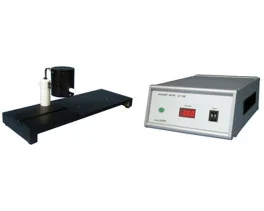Authors
D. Reiss, J. Wichmann, H. Tekeshima, B. Kieffer, A.-M. Ouagazzal.
Lab
IGBMC, Illkirch, France
Journal
European Journal of Pharmacology
Abstract
The aim of the present study was to clarify the role of nociceptin system in pain modulation. The effects of the synthetic nociceptin (NOP) receptor agonist, Ro64-6198 ((1S,3aS)-8-(2,3,3a,4,5,6-hexahydro-1H-phenalen-1-yl)-1-phenyl-1,3,8-triaza-spiro[4.5]decan-4-one), on reactivity to acute noxious stimuli were assessed in C57BL/6N (B6) mice in tail-flick, hot-plate and shock threshold tests. The mu receptor agonist, morphine, was used in each study for comparison. In the tail-flick test, morphine (4 and 8 mg/kg, i.p.) produced analgesia, while Ro64-6198 (0.3, 1 and 3 mg/kg, i.p.) increased pain sensitivity. The effects of Ro64-6198 were seen in naïve but not in mice previously habituated to testing conditions, indicating that increased pain sensitivity may be due to inhibition of stress-induced analgesia. In the hot-plate and the shock threshold tests, Ro64-6198 produced analgesia in B6 mice, like morphine. These effects were reproduced in wild-type but not in NOP receptor knockout mice. Finally, when injected conjointly at subthreshold doses, Ro64-6198 (1 mg/kg) and morphine (1 mg/kg) acted in additive manner to reduce pain sensitivity in the hot-plate test. Together these results show that systemic activation of NOP receptors produced bidirectional changes in pain sensitivity depending on the experimental conditions. They also suggest that central NOP and mu receptors may inhibit reactivity to acute noxious stimuli via independent neural mechanisms.
BIOSEB Instruments Used
Tail flick meter (BX-TF)
Source : http://www.sciencedirect.com/science/article/pii/S0014299907011879

 Douleur - Allodynie/Hyperalgésie Thermique
Douleur - Allodynie/Hyperalgésie Thermique Douleur - Spontanée - Déficit de Posture
Douleur - Spontanée - Déficit de Posture Douleur - Allodynie/Hyperalgésie Mécanique
Douleur - Allodynie/Hyperalgésie Mécanique Apprentissage/Mémoire - Attention - Addiction
Apprentissage/Mémoire - Attention - Addiction Physiologie & Recherche Respiratoire
Physiologie & Recherche Respiratoire




































 Douleur
Douleur Système Nerveux Central (SNC)
Système Nerveux Central (SNC)  Neurodégénérescence
Neurodégénérescence Système sensoriel
Système sensoriel Système moteur
Système moteur Troubles de l'humeur
Troubles de l'humeur Autres pathologies
Autres pathologies Système musculaire
Système musculaire Articulations
Articulations Métabolisme
Métabolisme Thématiques transversales
Thématiques transversales Congrès & Meetings
Congrès & Meetings 